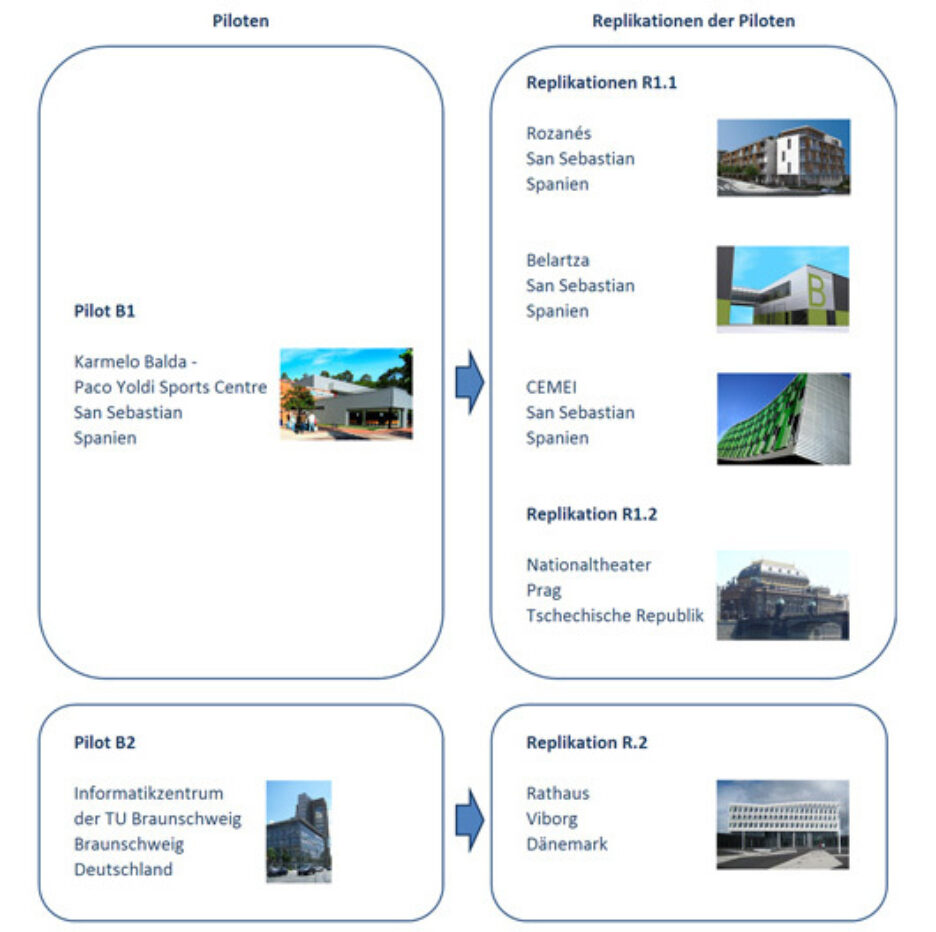BEST Energy
Back to project overviewProject description
Use and evaluation of information and communication technologies to optimize the energy efficiency of public buildings.
The aim of the BEST Energy project is to significantly increase energy efficiency in public buildings. With the help of centralized, ICT-based monitoring and management of building operation, energy consumption and energy generation, all stakeholders receive the necessary tools and information to take energy-saving measures in planning, use and operation. The energy consumption of the building is to be reduced by 12%. The success of optimization measures is monitored. After optimization, the measures and the tools used are documented.
During the research project, energy consumption will be examined using two pilot buildings, and possible optimization measures will be identified and implemented. The optimization measures and the tools used will be documented in order to subsequently transfer the results and experiences from the pilot projects to five replications.
The IGS is making a significant contribution to the success of the project: An innovative ICT solution is being used and tested at the TU Braunschweig's IT center and the city hall of Viborg in Denmark.
The concept of the BEST Energy project is based on the integration of innovative building and information technology in control and monitoring systems. The increase in energy efficiency results from two key aspects:
Monitoring of current operating parameters, energy consumption and generation make it possible to analyze, optimize and monitor the energy performance of a building.
The ICTs used provide direct feedback on the building's performance to users, maintenance staff and the public in order to raise awareness of the links between personal behavior and energy consumption and thus bring about changes in behavior.
Specific objectives of the BEST Energy project are:
Implementation in practice:
The innovative ICT systems will be used in real buildings to demonstrate and improve the practical suitability of the technology.
Optimization:
The use of ICT systems enables a detailed analysis of building operation and, based on this, a comprehensive analysis and precise optimization of building functions.
Monitoring:
Monitoring involves analyzing the energy efficiency of buildings and the effectiveness of the ICT tools used.
Communication and multiplication:
The results and experiences of the pilot and replication applications are published and made available to public administrations in particular in publications and events. The broad application of innovative ICT tools is seen as the key to an energy-efficient building stock in Europe.
In addition to buildings, BEST Energy is also evaluating the use of ICT to improve the efficiency of street lighting.
- Fomento de San Sebastian, Spain Giroa S.A., Bilbao, Spain Green Power Monitor, Barcelona, Spain Viborg Municipality, Denmark COWI, Kongens Lyngby, Denmark energydesign braunschweig, Braunschweig, Germany Rumpe Information Technologies, Abensberg, Germany RWTH Aachen University, Aachen, Germany Saarland University, Saarbrücken, Germany Almada City Council CMA, Portugal AGENEAL Local Energy management Agency of Almada, Portugal ENESA a.s., Prague, Czech Republic
